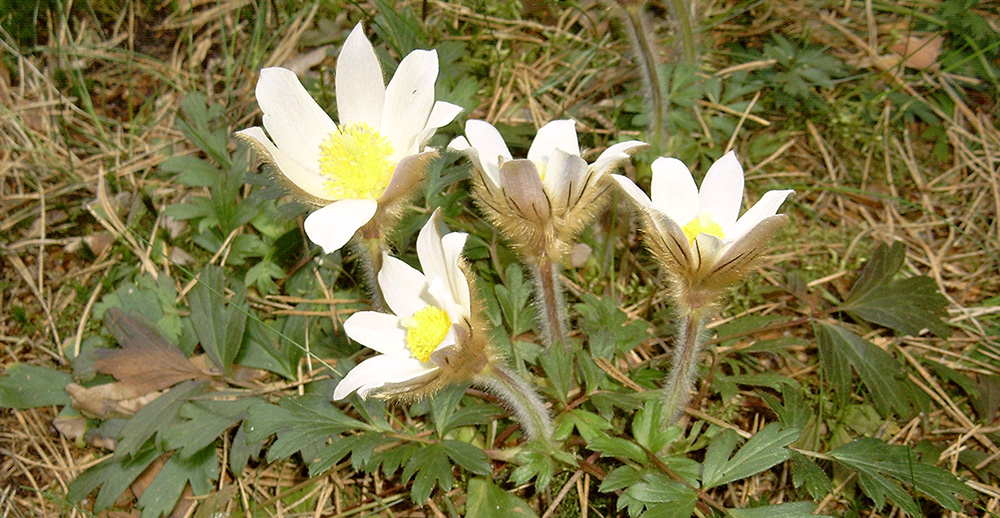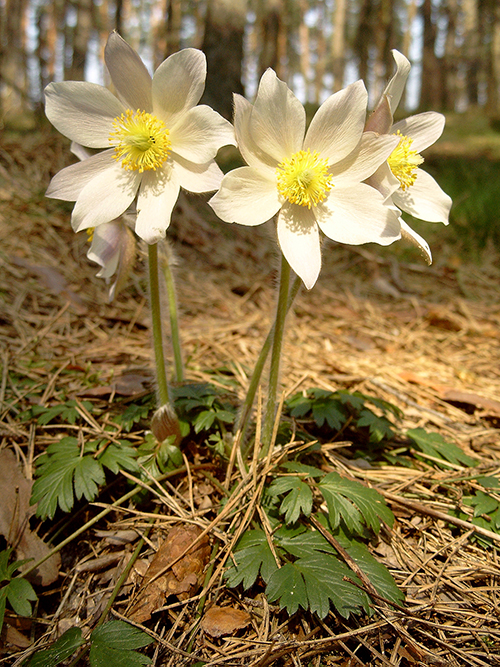Endangered Plant Species in Bavaria
Individual Successes and Unfortunately Many Further Deteriorationsle weitere Verschlechterungen
In cooperation and with funding from the Bavarian State Office for the Environment (LfU), a new Red List of endangered ferns and flowering plants of Bavaria is currently being compiled by scientists from the Bavarian State Collection for Botany (SNSB-BSM), as well as volunteer botanists and mappers from Bavaria. The aim is to take into account the development of the populations of rare and endangered plant species, especially over the past 30 years. There is some good news about species that were on the verge of extinction 20 years ago, whose populations have however recovered well thanks to targeted species assistance programs in Bavaria. The majority of Bavaria’s endangered plant species continue to fare poorly, or their status has even deteriorated significantly since the last Bavarian Red List was published in 2003.
Bavaria is home to almost 5,000 different species of ferns and flowering plants, of which 3,156 are naturally occurring native (indigenous) species and the rest are so-called neophytes and adventitious flora, i.e. newcomers to our native flora that have been intentionally or unintentionally introduced by humans. These species numbers are known from the last inventory of the Bavarian flora, which was published in 2014 (and updated in 2018) under the leadership of Prof. Lenz Meierott and Dr. Wolfgang Lippert and the Bavarian Botanical Society (BBG e.V.). However, for many species there is insufficient knowledge of their current population numbers, endangerment, and population trends; the most recent data on this were collected as part of the last Red List of Plants of Bavaria in 2003. A new, updated Red List of naturally occurring ferns and flowering plants in Bavaria (neophytes are explicitly excluded) has been under development since 2017 and is scheduled for publication in early 2022. Special attention will be paid to those plant species that are endangered in their populations, i.e. those that are considered “threatened with extinction” (Red List category 1), “critically endangered” (RL category 2), or “endangered” (RL category 3) in Bavaria.
The downward trend of many endangered plant species in Bavaria, like in all of Germany, unfortunately continues unabated, as the new data show. For example, many plant species that were still classified as “critically endangered” in 2003 must now already be placed in the highest endangerment category “threatened with extinction” because their populations have continued to decline, so that extinction of these plant species in Bavaria is likely in the next few years or decades.
“Bavaria is the most botanically diverse state in Germany – there are even some plant species that globally only occur in Bavaria and nowhere else. Unfortunately, all these endemics and botanical rarities can now be found in the Red List of Threatened Species,” says Dr. Andreas Fleischmann, a scientist from the Bavarian State Collection for Botany (SNSB-BSM) and first chairman of the Bavarian Botanical Society, who was involved in the preparation of the new Red List. Together with six freelance botanists, he is currently compiling the inventory and status of Bavaria’s rare and endangered plant species. And in many cases things are unfortunately not looking good. “The rare yellow-white strawflower, Pseudognaphalium luteoalbum, could not be found at any of the only 6 known growing sites in Bavaria anymore, the species is probably extinct in our country,” says Jürgen Klotz from Regensburg, who has remapped many of the known occurrences of rare plant species on behalf of the LfU. “Even the sand rush, Juncus tenageia, a very rare plant species that occurs in Bavaria only in the Erlangen pond area, has disappeared from 9 of the 10 known growing sites where it still occurred in the 1990s and early 2000s,” Klotz continues. Unfortunately, he could cite many more such examples. Nearly every other plant species he mapped, which was already listed as “threatened with extinction” in Bavaria’s Red List in 2003, has seen its population decline again in the last 20 years.
There have, of course, been efforts for decades to counteract this downward trend in species diversity. “One measure that works well in many cases are the species assistance programs,” says Marcel Ruff of the LfU’s newly founded Bavarian Species Conservation Center. He coordinates botanical species conservation programs throughout Bavaria. “But in most cases, the successes of such targeted species assistance programs depend on the dedication of a few individuals who continuously and meticulously carry out biotope maintenance and protection measures. Their efforts cannot be praised highly enough for species conservation in Bavaria – without their commitment, we would already have lost many botanical treasures completely,” says Ruff.
One example of successful botanical species conservation is the white-flowered spring pasqueflower, Pulsatilla vernalis. In Germany, it can only be found in Bavaria (it is already extinct in all other German states), and there has always been found only in a few places with acidic soils – outside the Alps, mainly in sparse sand pine forests in eastern Bavaria. For more than 20 years Martin Scheuerer has been taking care of species conservation measures for the preservation of the extra-alpine populations of this rare species. The populations at 6 growing sites in the sandy areas in the district of Kelheim have fortunately increased in the meantime, but a survival of this rare plant species will also depend on the care measures of botanical species protection in the long term.
Further Literature:
Scheuerer, M. (2020). Artenhilfsmaßnahmen zu Pulsatilla vernalis in Bayern außerhalb der Alpen – eine Zwischenbilanz. Hoppea, Denkschriften der Regensb. Bot. Gesellschaft 81 (im Druck).
Zehm, A., Klotz, J., Horn, K., Wecker, M., von Brackel, W., Blachnik, T., von Brackel, J., Buchholz, A., Diewald, W.,Elsner, O., Feulner, M., Kohler, U., Lausser, A., Radkowitsch, A., Ruff, M., Schön, M., Wagner, A., Wagner, I. & Wimmelbücker, A. (2020). Rückgang seltenster Pflanzenarten ist ungebremst – Freilanduntersuchungen zur Bestandsentwicklung vom Aussterben bedrohter Gefäßpflanzenarten Bayerns. Berichte der Bayerischen Botanischen Gesellschaft 90: 5-42.
Contact:
Dr. Andreas Fleischmann
Botanische Staatssammlung München (SNSB-BSM)
Menzinger Str. 67, 80638 München
Tel.: 089 17861 240
E-Mail: fleischmann@snsb.de



